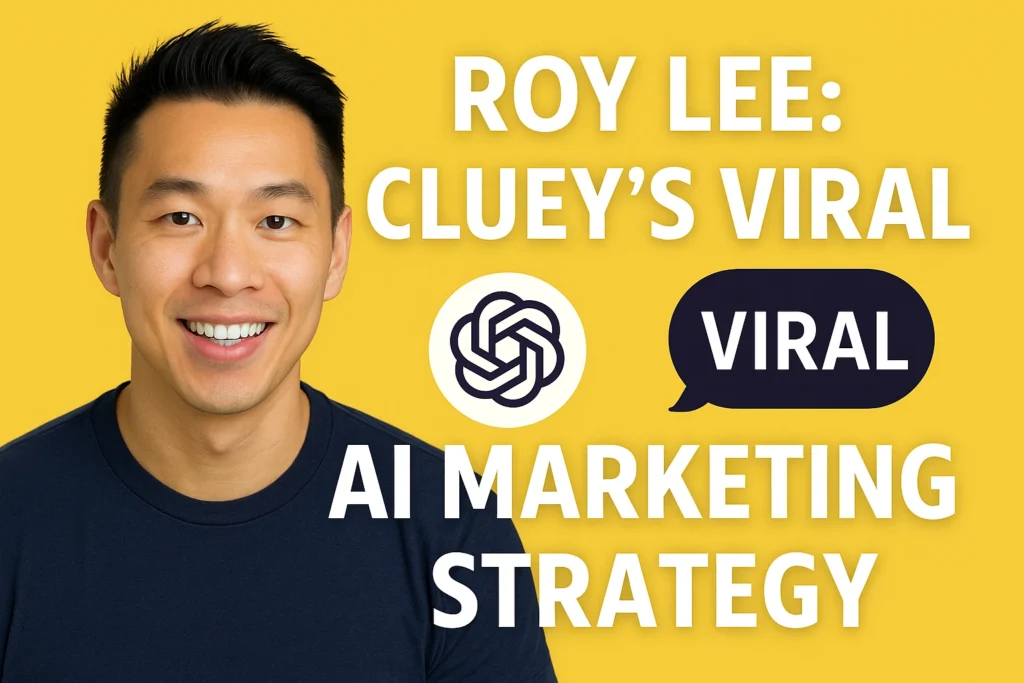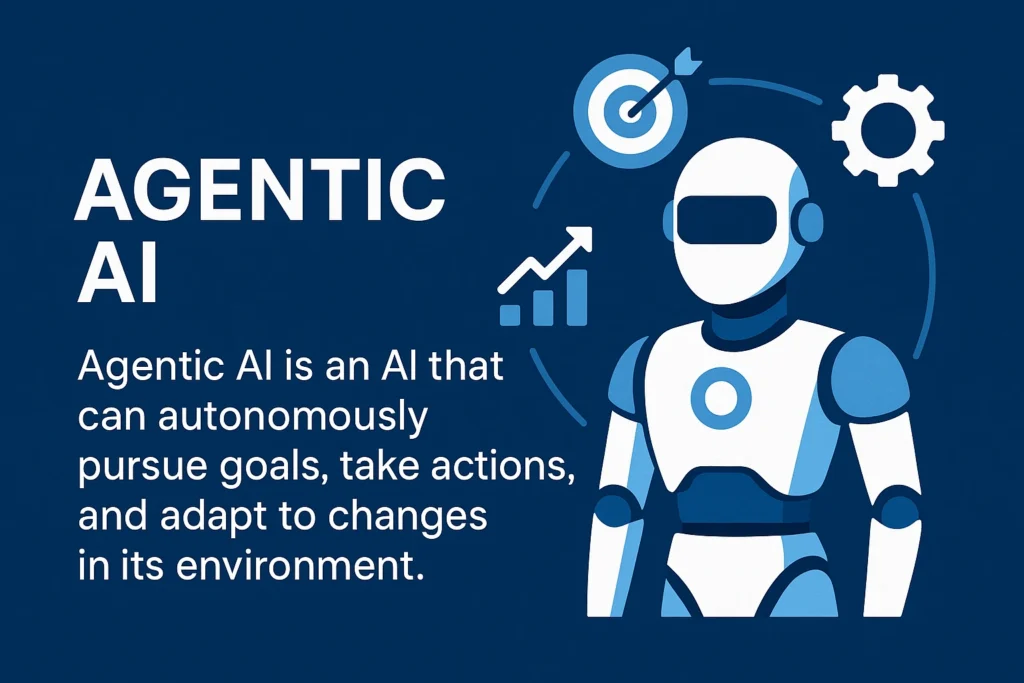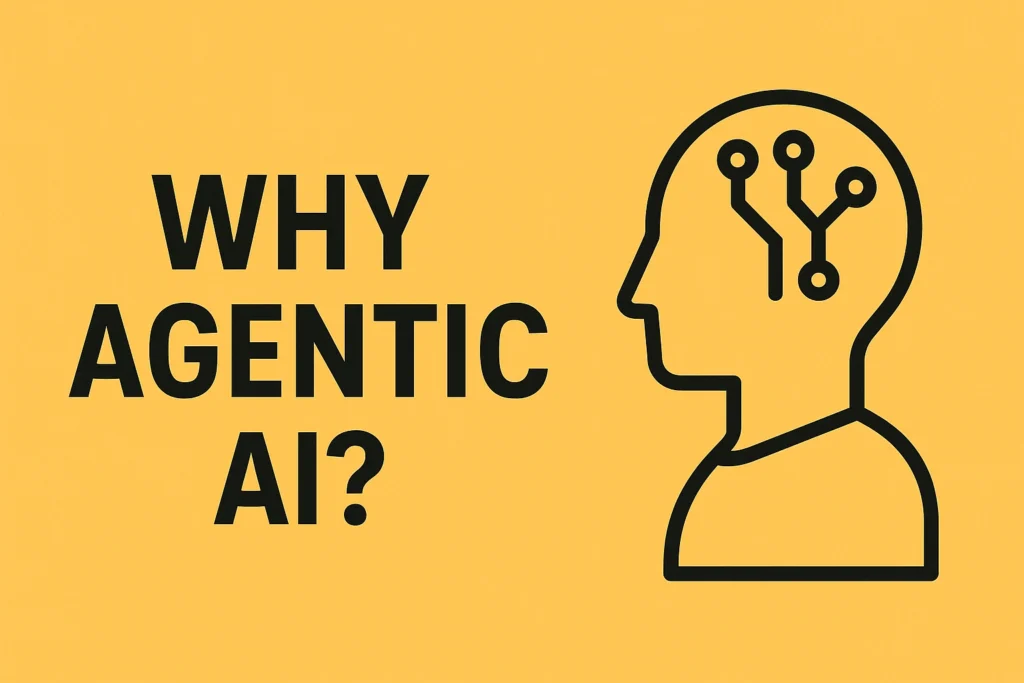Table of Contents
ToggleRoy Lee: Cluey's Viral AI Marketing Strategy

Roy Lee and Cluey - The Future of AI and Marketing
At Rise of Agentic, we've been closely observing the rapid advancements in AI, and one entrepreneurial journey stands out as particularly illustrative of the future: that of 21-year-old founder Roy Lee and his AI SaaS product, Cluey. Launched just months ago, Cluey has swiftly achieved remarkable growth, showcasing not only the power of innovative, proactive AI but also a highly unconventional and effective "distribution first" marketing approach. Lee's path, marked by bold decisions and a deep understanding of modern digital culture, offers critical insights into the evolving tech landscape.
Summary
Roy Lee, a visionary young founder, has rapidly propelled his AI SaaS product, Cluey, to a projected $6 million Annual Recurring Revenue (ARR) in less than two months since its April 20th launch. Cluey distinguishes itself as an "AI assistant that sees what you see, hears what you hear, and gives you live assistance without you having to prompt it." It's designed for practical use in high-stakes environments like meetings, sales calls, and interviews, crucially remaining "invisible to screen share." Lee's exceptional success stems from Cluey's innovative, proactive AI capabilities, coupled with an unorthodox, "distribution first" marketing strategy. This strategy masterfully leverages virality, calculated controversy, and a profound understanding of short-form content algorithms and Gen Z culture. His journey is notable for a history of audacious, high-risk actions, including previous academic setbacks due to a controversial AI tool that, ironically, generated the initial hype and funding for Cluey.
Key Areas & Ideas
1. Cluey: Proactive, Invisible AI Assistance
- Core Functionality: Cluey acts as an "AI assistant that sees what you see, hears what you hear and gives you live assistance without you having to prompt it." It constantly monitors screen content and audio, allowing users to interact with AI based on real-time context without manual input.
-
Problem Solved: It addresses a key limitation of existing AI models (like traditional chatbots) that only respond to typed prompts. As Lee notes,
"why limit it to only the text question that you ask it? It just feels like an extremely limited user experience."
Cluey aims to be a "10x version of ChatGPT" by offering proactive, contextual assistance. - Invisibility and Utility: A standout feature is its invisibility during screen sharing. This makes it invaluable for scenarios requiring discreet AI help, such as "meetings, sales calls, interviews," or "anytime you want to use AI without anybody knowing that you're using AI."
- Proactive Assistance: Cluey’s goal is to anticipate user needs: "all you have to do is press a single command and it will like predict what you need." It leverages continuous observation to "proactively give you information without you having to ask it a specific question."
- Personalization: Users can tailor Cluey with specific information and preferred response styles (e.g., "I'm a sales rep at Verizon, here's the product information when someone asks these types of questions answer in this type of way").
- Future Vision: While currently software-based, the vision includes future "hardware" integrations. Lee imagines Cluey evolving into a real-world "Jarvis," anticipating advanced multimodal AI models that will make their product "literally 1 million times better." He suggests that research labs might prefer to acquire innovative application-layer products rather than building them from scratch.
2. Roy Lee's Unconventional Path & High-Risk Tolerance
- Early Life & Setbacks: Lee's entrepreneurial drive was significantly shaped by academic setbacks, including a rescinded Harvard offer and a Columbia suspension, both stemming from building and publicizing an AI tool designed to assist in technical interviews. This period, in his words, instilled a "gigantic chip in my shoulder."
- Viral Beginnings: The controversial interview tool, designed to solve programming challenges in real-time, gained massive viral attention after Lee demonstrated its use to secure a job offer. This "super risky play" led to his academic suspension but also propelled him into the spotlight, enabling him to raise significant funding.
- Investor Mindset: Silicon Valley investors, he notes, "love seeing kids do bold things," and "are eager to put their money in people who are making big bets." Lee emphasizes that "there's just not enough people in the world who are willing to take bold actions."
- "Swing Big" Philosophy: A core belief for Lee is that "it's very hard to lose when you take the biggest risks ever." He advocates for making bold bets, securing maximum funding, and persevering through controversy, believing that "the only way out is through."
3. "Distribution First" Marketing & Mind Share
- Core Thesis: Cluey operates as a "distribution first company." Their thesis is straightforward: "if you can get a billion views a month on anything does not matter if you're selling perfume or software people will buy and... you will become rich just because you've been able to grab attention."
- Leveraging Short-Form Content: The explosion of short-form video (TikTok, Instagram Reels) has created a vast opportunity. Content consumption has "100xed" while content creation hasn't kept pace, making skilled creators highly valuable.
- Youth Advantage: Lee believes young founders (under 25) possess a unique edge in modern marketing due to their inherent ability to "have your finger on the pulse of culture." His marketing team's average age is 21.5.
- Mind Share vs. Brand Awareness: Lee distinguishes "mind share" – where people are actively "talking about you" due to controversial content or situations – from general brand awareness. Algorithms, he notes, reward content that sparks a "strong reaction."
-
Controversial Scenarios: Cluey intentionally engineers "controversial scenarios" because "the algorithm rewards extremely controversial things." This includes:
- Provocative Language: Employing phrases like "assist in everything" for Cluey, a "clever marketing play to get inside people's heads," even if the product itself isn't literally about unethical assistance.
- Bold Launch Videos: Showcasing scenarios designed to spark debate, demonstrating the product in a controversial light to maximize stickiness.
- Manufactured Controversies: Creating public "What's going on?" reactions, such as seemingly misleading hiring announcements to generate buzz.
- Absurd Viral Moments: Allowing unconventional behind-the-scenes content that becomes mega-viral due to its shocking or absurd nature (e.g., CEO getting a lap dance in the office).
-
Multi-Platform Strategy:
- X (formerly Twitter): Used for controversial scenarios and founder marketing, aiming for mind share.
- Instagram (Reels): Primary platform for User-Generated Content (UGC), focused on scaling views and driving conversions, often with more direct product visuals.
- LinkedIn: Utilizes ghostwriting to adapt content for professional audiences.
- YouTube/TikTok: Continues to explore these platforms as their algorithms differ from Instagram.
- UGC Funnel & Creator Recruitment: Cluey leverages a "gigantic UGC funnel" with approximately 60 in-house content creators. Creators receive a flat rate per video plus performance bonuses for high view counts. They actively scout social media for emerging creators with "hot algo pull" and an eye for compelling content, often targeting those who have overcome initial public posting hesitation (e.g., posted 3+ videos).
- Founder Marketing & Authenticity: Lee believes the "company voice needs to be the founder's voice," urging founders to "embrace" controversial takes as people "are starving to see something real," fostering a strong "parasocial connection."
- Audience-Centric Events: Even physical events are designed to resonate with the target audience (e.g., college-age engineers prioritizing fun over "formal networking").
- "Cinematic + Controversial" Formula: A key learning is that viral launches combine a "cinematic opening shot" with a "very controversial story" or situation to generate discussion.
4. Insights on Modern Work & AI
- Work-Life Balance & Relationships: Lee suggests that meaningful relationships contribute to productivity and mental well-being for those in demanding roles, arguing that "if you're a dude and you're out there grinding 12 hours a day like you need a girl to come back home to." He believes optimal productivity is "eight hours of deep focused work a day and then... you're chilling."
- Lean Team & AI Productivity: Cluey operates with a remarkably lean engineering team (currently 3 full-time, aiming for 6-7 total). This demonstrates that "quality people with AI is becoming very real" and that engineers can "ship a lot of code fast" by leveraging AI.
- AI for Learning & Development: Lee strongly refutes the notion that using AI for coding will "handicap" developers. He believes it allows engineers to "experience such a greater surface area of problems" and ultimately makes them "much better developer" by pushing them to learn when AI reaches its limitations.
Important Facts & Figures
- Cluey Launch: April 20th (less than 2 months prior to the insights gathered)
- Projected ARR: $6 million (based on $500k Monthly Recurring Revenue)
- Founder's Age: 21
- Marketing Team Average Age: 21.5
- Seed Funding Raised: $5 million (attributed to prior viral success)
- In-house UGC Creators: Approximately 60
- UGC Compensation Model: $25-$40 per video (flat rate) + performance bonuses ($500 for 500k views, $1,000 for 1M views)
- Recent Short-Form Installs: Over 1 million in two months
- Projected Monthly Short-Form Views: 50 million
Actionable Takeaways
- Prioritize Distribution: In an era where product building is becoming more accessible with AI, aggressive and unconventional distribution, especially via short-form content, is paramount for rapid growth.
- Embrace Strategic Controversy: Carefully manufactured controversial situations and language can drive significant mind share and virality, particularly on platforms like X.
- Invest in Scalable UGC: Building an in-house or managed network of short-form content creators is a highly cost-effective and scalable method for generating engagement and driving conversions.
- Authentic Founder Marketing: Founders should leverage their personal brand and authentic voice, even if it's unconventional, to foster deeper, more genuine connections with their audience.
- "Swing Big" Mentality: Don't shy away from seeking substantial funding or setting ambitious goals. Taking calculated, significant risks can often lead to disproportionately large rewards.
- Leverage AI for Productivity: Actively integrate AI into coding and daily workflows. It can significantly enhance productivity, learning, and allow lean teams to achieve high output.
FAQ: Roy Lee and Cluey - The Future of AI and Marketing
Cluey is an AI assistant developed by Roy Lee, a 21-year-old entrepreneur. It stands out from traditional AI models like ChatGPT by being a "10x version" that offers live, context-aware assistance without requiring explicit prompts. Unlike ChatGPT, which relies solely on typed questions, Cluey continuously monitors what's on a user's screen and listens to audio, allowing it to "see what you see, hear what you hear." This constant observation and real-time reasoning enable Cluey to proactively offer relevant information or suggestions in various scenarios, such as meetings, sales calls, or interviews. Its "invisible to screen share" feature further enhances its utility, allowing users to leverage AI discreetly. Essentially, Cluey aims to provide a more intuitive and integrated AI experience by eliminating the need for constant, manual prompting and instead acting as a seamless, always-on assistant.
Roy Lee's path to creating Cluey is unconventional and marked by significant challenges. Initially accepted into Harvard, his offer was rescinded after he was suspended from high school for sneaking out. This event led to a year of self-imposed isolation, intense programming, and a strong desire to prove himself. He then attended community college in the Bay Area, transferred to Columbia, and actively sought a co-founder, eventually partnering with Neil. Their first significant project was "Interview Coder," a tool designed to help users solve technical interviews by providing AI-generated code solutions that were undetectable by screen sharing.
The controversy surrounding Interview Coder, including Roy's public demonstration of using it to get an Amazon job offer and his subsequent suspension from Columbia (due to Amazon's complaint), paradoxically generated immense hype. This virality attracted significant investor interest, allowing him to raise $5 million. Through this process, Roy realized the broader potential of their "invisible AI" technology beyond just assisting in interviews, recognizing its applicability to various professional and personal contexts, leading to the pivot and development of Cluey.
Cluey's primary marketing strategy is centered around becoming a "distribution first company" that leverages "mass short-form UGC" (User-Generated Content) and controversial scenarios to gain "mind share." The core thesis is that if a company can consistently achieve billions of views a month through engaging content, sales will naturally follow, regardless of the product itself. This approach capitalizes on the current "gigantic delta" in the market where there's an overwhelming demand for short-form content, but not enough creators to supply it.
"Mind share" is a concept that goes beyond mere brand awareness or passive consumption. While a product might get millions of views, like a "Subway Surfer clip," it might not be discussed or remembered in daily conversations. Mind share, in Cluey's context, means generating strong emotional reactions and conversations around the brand, making it a topic of discussion among people. This is achieved through highly controversial, often absurd, and cinematic marketing stunts that aim to evoke strong reactions, making the brand "sticky" and memorable, rather than just visually present. The goal is to make people actively talk about Cluey, even if they don't fully understand the product yet.
Cluey intentionally engineers controversial marketing stunts to gain mind share. Roy Lee believes that "the algorithm rewards extremely controversial things," especially on platforms like X (formerly Twitter) where the humor and cultural understanding haven't caught up to platforms like Instagram. The strategy involves creating situations that are absurd or seemingly inappropriate to provoke strong reactions and generate widespread discussion.
Key examples include:
- The Interview Coder Saga: Publicly demonstrating assistance in an interview and facing academic consequences, all while live-tweeting the process, generated immense early virality and investor interest.
- The Launch Video: Instead of a typical product demo, Cluey's launch video showed a "Black Mirror-esque" scenario of Roy on a date, using the concept of subtle assistance, which was visually provocative and designed to be controversial, even though the app isn't explicitly for unethical use. The goal was to shock and grab attention.
- The "50 Interns" Video: A staged announcement that Cluey was "hiring 50 interns" in San Francisco, which was designed to be ambiguous and evoke a "What's going on?" reaction. In reality, it was a content creation play, hiring a few managers and many content creators, but framed controversially to capture attention.
- The "Dancer" Incident: A behind-the-scenes clip from a planned "Cluey universe" skit showed Roy receiving a lap dance in the office. This unscripted virality on Twitter, due to its absurdity and unprofessional appearance, became a major topic of discussion, further cementing Cluey's controversial image.
These stunts often involve cinematic quality and provocative language ("assist in everything") to ensure they are "scroll stoppers" and generate conversation, regardless of whether they directly convert users immediately.
Roy Lee believes that in today's digital landscape, founders should be "real" and their personal brand should directly embody the company's audience and voice. He argues that people are "starving to see something real" and are tired of "corporate and professional" content that lacks authenticity. For him, founder marketing means openly sharing controversial takes and personality, even if it might alienate some. He contends that companies rarely fail due to a founder being too controversial; rather, they fail from a lack of traction or money.
His approach is rooted in the belief that taking big risks and being transparent with one's public image is essential for achieving "escape velocity" and becoming a "generational company." He dismisses the fear of backlash, noting that online negativity rarely translates to real-world negative impact. He actively tweets controversial opinions and promotes an unfiltered company voice that mirrors his own, ensuring that Cluey's brand is distinctive and memorable. This strategy aims to build a strong, loyal audience that resonates with the founder's authentic personality, even if it means some people "disagree with every take."
Cluey employs a highly organized and intentional approach to managing its large-scale User-Generated Content (UGC) efforts, primarily for short-form platforms like Instagram Reels. Roy Lee identified a market inefficiency where many influencers, despite having significant reach, are "underpaid." Cluey leverages this by recruiting a large in-house team of content creators.
The recruitment strategy involves actively seeking out individuals with "hot algorithm pull" – those whose content is trending on platforms like TikTok and Instagram, often young Asian creators in the tech space. The marketing team itself is literally a "timeline in person," composed of people whose content Roy and his team have observed going viral.
Cluey's payment model for these creators is based on a flat fee per video (typically $25-$40) plus performance bonuses tied to views (e.g., $500 for 500,000 views, $1,000 for 1 million views). This "pay after views are generated" model makes it cost-effective. Creators are given simple briefs, such as "make a post that has Cluey mentions Cluey in some way," allowing for creative freedom within a broad framework. The company manages these creators through group DMs (with plans to move to Discord) and emphasizes recruiting individuals who have already overcome the initial discomfort of posting content, even if they only have a few videos. This mass short-form UGC strategy is considered Cluey's "performance engine," designed for scale and conversion by visually demonstrating the product's use cases.
Roy Lee believes that while AI content creation is advancing rapidly, it currently lacks the "final 10%" that makes human-generated content truly "feel real." He notes that AI-generated videos, despite technical improvements (like V3's voice capabilities), often appear "soulless" and struggle to provoke genuine emotional responses or controversy. He states that the Instagram algorithm, for instance, heavily rewards content that feels authentic, leading to significant differences in viewership compared to AI-generated content that doesn't quite hit the mark. Cluey has tested AI content generation but finds that a "human in the loop" is still necessary for the nuanced "feeling" that drives virality.
Regarding the balance of power between technical engineers and creators in the age of AI, Roy strongly bets on the creator. He argues that AI has "democratized" the ability to build functional software, making MVPs easier to create without requiring genius-level coding skills. Consequently, the bottleneck has shifted from technical expertise to "the understanding of what goes viral and the agency to act on that." He asserts that "distribution is more important than product" right now because products are becoming increasingly easy to build with AI. Therefore, the most valuable individuals in the coming years will be those who possess exceptional marketing instincts and the ability to capture attention, rather than just technical prowess.
Roy Lee's journey with Cluey has shaped several core philosophies:
- Take Big Risks: He strongly advocates for taking "the biggest risks possible" and "swinging big" at every opportunity. He believes that true success comes from venturing into areas where competition is minimal because few are willing to take such bold steps. His own story of intentionally facing academic consequences to generate hype exemplifies this.
- Fundraise Aggressively: When fundraising, his advice is to "fundraise the most amount you can when you don't need it" at the highest possible valuation. He dismisses conservative approaches, arguing that a strong belief in one's company justifies aiming for massive capital raises.
- Authenticity Over Professionalism: Companies should embrace authenticity and align their brand voice with the founder's genuine personality, rather than adhering to outdated corporate professionalism. People crave realness, and a distinctive, even controversial, brand voice is key to capturing attention.
- Embrace AI in Learning: Contrary to some senior developers, Roy believes using AI to learn coding makes engineers better by exposing them to a wider range of problems. He compares it to using a calculator; it handles routine tasks, allowing humans to tackle more complex, unsolved challenges.
- Personal Life and Productivity: He suggests that a stable personal life, particularly having a partner, is crucial for productivity and mental health, arguing that it prevents unproductive "grind culture" and allows for a healthy balance.
- Reputation is Secondary (until Scale): For early-stage startups not yet at "escape velocity," reputation and public perception are irrelevant. The sole focus should be growth, even if it means generating controversy or being perceived as unconventional.
Posts Gallery

Agentic AI for Enterprise Automation
Discover how Agentic AI revolutionizes enterprise automation, boosting efficiency and strategic decision-making.
Read More →
How Agentic AI Works: Intent to Execution
Unpack the intricate process of Agentic AI, from understanding user intent to executing complex tasks autonomously.
Read More →
Purpose & Use Cases of Agentic AI
Explore the diverse applications and strategic importance of Agentic AI across various industries and daily operations.
Read More →
What is Agentic AI?
A foundational article explaining the core concepts of Agentic AI, defining its components and its role in modern automation.
Read More →
Why Agentic AI?
Understand the compelling reasons and significant benefits that make Agentic AI a transformative technology for efficiency and innovation.
Read More →
AI Tools Spotlight
A comprehensive overview of cutting-edge AI tools that are shaping the future of automation and intelligent systems.
Read More →

